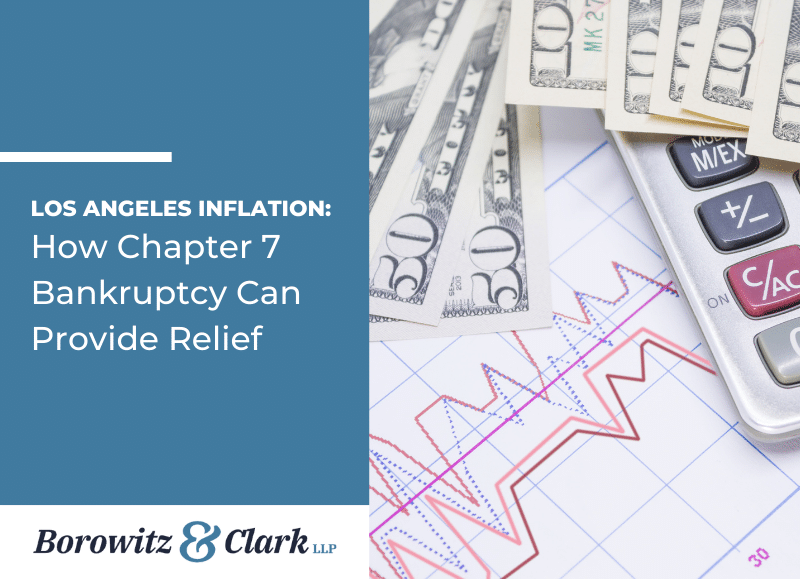From March of 2021 to March of 2022, the United States saw an 8.5% increase in the Consumer Price Index (CPI). In other words, in the spring of 2022 it’s 8.5% more expensive to pay for a mix of basic consumer expenses such as food and energy. The impact varies a bit from place to place, but Los Angeles is right on track with the nation. 
Table of Contents
The Los Angeles metro area also saw an 8.5% increase over the same period. Of course, the price hike isn’t uniform across the board. Some items have risen less than 8.5%. Others, like food (at 8.6%) are right in line with the aggregate increase. And, still others far exceed 8.5%. For example, in the Los Angeles area, energy prices are up 36.7%.
If you’re trying to make ends meet on the same income you had before inflation struck–or even if you’ve received a small increase that didn’t keep pace with inflation–we don’t have to tell you how hard inflation can hit. Here’s a look at what the 4th Annual Salary Finance report revealed:
- 45% of survey respondents said they were financially stressed–more than in any of the previous three years
- 75% said inflation had impacted their finances
- 55% said they’d had less cash on hand during the past year than during the year before
- 76% said the rising cost of consumer goods had affected them, and the percentage jumped to 84% among those with annual income of less than $55,000
For some Los Angeles residents, there may be more bad news to come.
Further Increases May Lie Ahead
You may have heard that the Federal Reserve increased interest rates in hopes of dialing down inflation. But, when it comes to costs, some Los Angeles residents may have two more bumps on the horizon.
First, the freeze on student loan payments, interest, and collections is slated to end in August. Some have been able to continue making loan payments to lower balances during the freeze. But many others have reallocated funds that would normally have gone to student loan payments to absorb the increased cost of living. If loan payments resume as scheduled in September, that extra money will no longer be available.
Second, Los Angeles has so far been partly shielded from the massive rent increases that have impacted much of the country. That’s partly because rent has been frozen for the hundreds of thousands of rent-stabilized apartments in the city until the spring of 2023. But, not everyone enjoys this protection. For instance:
- Rent stabilization only applies to ongoing tenants–once an apartment becomes vacant, the landlord can price it as high as they choose, making it more difficult to find affordable rental housing,
- Apartments built after 1978 but at least 15 years ago have some restrictions, but rent could still increase by up to 8.6% this year, and
- Those in newer units could face rent hikes of up to 10% if they are protected by price-gouging restrictions, and even larger increases if they are not
In other words, life in Los Angeles has gotten more expensive across the past year, and some area residents can expect additional increased costs over the next 12 months.
How to Manage Inflation in California
For most people, the first line of defense when something breaks the budget is to look for ways to scale back costs. That’s usually a good first step, but it isn’t always sufficient. That’s especially true when the problem is that necessities such as food and energy have significantly increased in price.
Another option is to increase income, and many have done so in the past year. In Los Angeles, total compensation increased by 5.2% between March of 2021 and March of 2022. Unfortunately, that number is lower than the rate of inflation, meaning Los Angeles workers are still coming out behind. And, of course, not all workers saw an increase in earnings.
If inflation has broken your budget, or if you’re just getting by and have student loan payments, rent increases, and other increased expenses on the horizon, it’s time to explore a more lasting solution than cutting out restaurants and delaying vehicle maintenance.
If you’re making payments on credit cards and other high interest debt, you may have given little thought to those payments before inflation took its toll. Or, maybe you were already juggling those payments with medical debt and other expenses, wondering whether you’d ever pay down those balances. You may even have taken on expensive payday loans to fill the gap when prices started increasing, only to get caught in a cycle of costly re-borrowing.
Could Chapter 7 Bankruptcy Help You Fight Inflation?
Filing bankruptcy won’t lower the cost of consumer goods, but it might help you weather the changes. If you’re servicing high-cost debt like credit card debt, you’re spending money every month on interest. If you’ve fallen behind or are sporadically late, you’re almost certainly paying late fees as well.
For example, if you’re carrying $5,000 in credit card debt at 18% interest and making 3% minimum payments, it will take you about 19 years to pay off that credit card–assuming that you don’t make any purchases or incur any late fees or other charges. About half of the money you pay toward that credit card debt will go to interest.
Obviously, at higher balances and/or higher interest rates, the cost is even greater. If you make payments on the same $5,000 debt at the same minimum payment of 3% but your interest rate is 23.9%, it will take 27 years to pay down that debt, and 65% of your payments will go to interest.

An expert tip from Erik
Discharging that one debt would mean reclaiming $150/month to put toward the family budget, while saving you many years of payments and thousands of dollars in interest. But, most people don’t have just one debt. Depending on your debts and monthly payments, you might be able to save hundreds of dollars each month by wiping the slate clean.
To learn more about whether Chapter 7 bankruptcy could help you absorb increasing Los Angeles prices, schedule a free consultation with one of the experienced bankruptcy attorneys at Borowitz & Clark. Call 877-439-9717 right now. Or, if you prefer, fill out the contact form on this page or click in the lower right-hand corner to chat.
